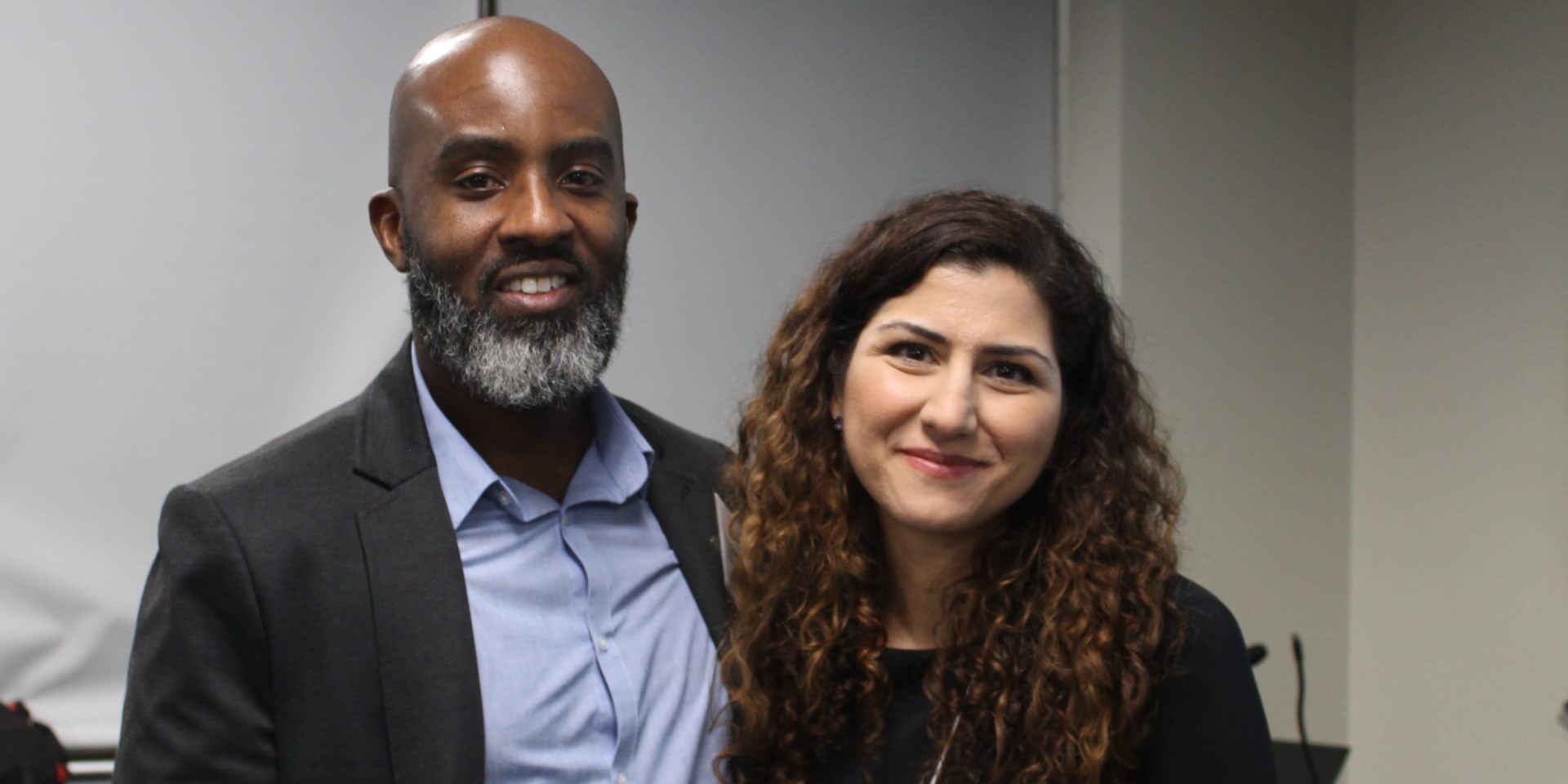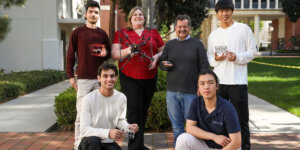
Shanechi with Frederick Gregory, program manager at the Army Research Office, at the event she hosted at USC Viterbi for MURI and BARI researchers. (PHOTO CREDIT: USC Viterbi)
In February 2019, professor Maryam Shanechi, an Andrew and Erna Viterbi Early Career Chair in Electrical Engineering in the Ming Hsieh Department of Electrical and Computer Engineering led a 3-day meeting to highlight progress made on the joint US-UK multidisciplinary University Research Initiative (MURI). Shanechi, who also leads the MURI, hosted over 60 scientists representing 12 world-renowned universities, various government labs in the US and UK, and NATO, with expertise in areas spanning engineering, computer science, AI, and neuroscience.
In addition to presenting progress on the MURI, the event kicked-off a new Bilateral Academic Research Initiative (BARI) between the UK and US, which is led on the UK side by Riccardo Poli of the University of Essex and on the US side by Shanechi. Both programs are funded jointly by US DoD and UK MoD. “We are very excited by the collective progress our team has made over the past 2 years on MURI and that it led to DoD and MoD entrusting us with the new BARI initiative,” said Shanechi. “Our progress has been enabled by a truly interdisciplinary collaboration across our international team whose diverse expertise spans from machine learning to neural engineering to neuroscience.”
“Our progress has been enabled by a truly interdisciplinary collaboration across our international team whose diverse expertise spans from machine learning to neural engineering to neuroscience.”
– Maryam Shanechi
With Shanechi as PI and with a funding of $11.25M, the MURI aims to develop next-generation multiscale brain-computer interfaces (BCIs) to enhance human decision-making capabilities. Shanechi and her team have developed new methodologies of modeling brain activity across multiple spatial and temporal scales to better understand the neural basis of decision-making. They have also used these methodologies to optimize multisensory information presentation to subjects to enhance their decision-making. The team includes faculty from UC Berkeley, Duke University, New York University, Cold Spring Harbor Lab, Harvard University, University of Essex, Imperial College London, and University College London, whose expertise spans machine learning, signal processing, neural engineering, computational neuroscience, and neurophysiology.
The BARI was implemented last month to develop a novel architecture in which humans team up with AI agent counterparts in group decision-making. These human/AI teams can outperform any individual, whether human or AI. A unique and promising aspect of the architecture is the use of BCIs to facilitate how teams are organized by decoding the human participants’ mental states and trust in AI and other human team members. Under Shanechi’s leadership, the US team consists of UC Professor Mike Jordan of UC Berkeley, Professor Kristina Simonyan of Harvard University, and Farid Hamzesichani of the University of Massachusetts. The UK team is made up of Professors Riccardo Poli and Luca Citi of the University of Essex and Professor Nick Yeung of Oxford University. The funding for BARI totals $3M on the US side and £1.5M on the UK side over 3 years.
“In MURI, we are moving toward multiscale BCIs that can improve decision making in individuals humans.” Shanechi said. “BARI provides the opportunity to also move toward improving decision making in human-AI teams and to advance AI technologies by combining them with BCIs.”
Published on March 18th, 2019
Last updated on May 16th, 2024












